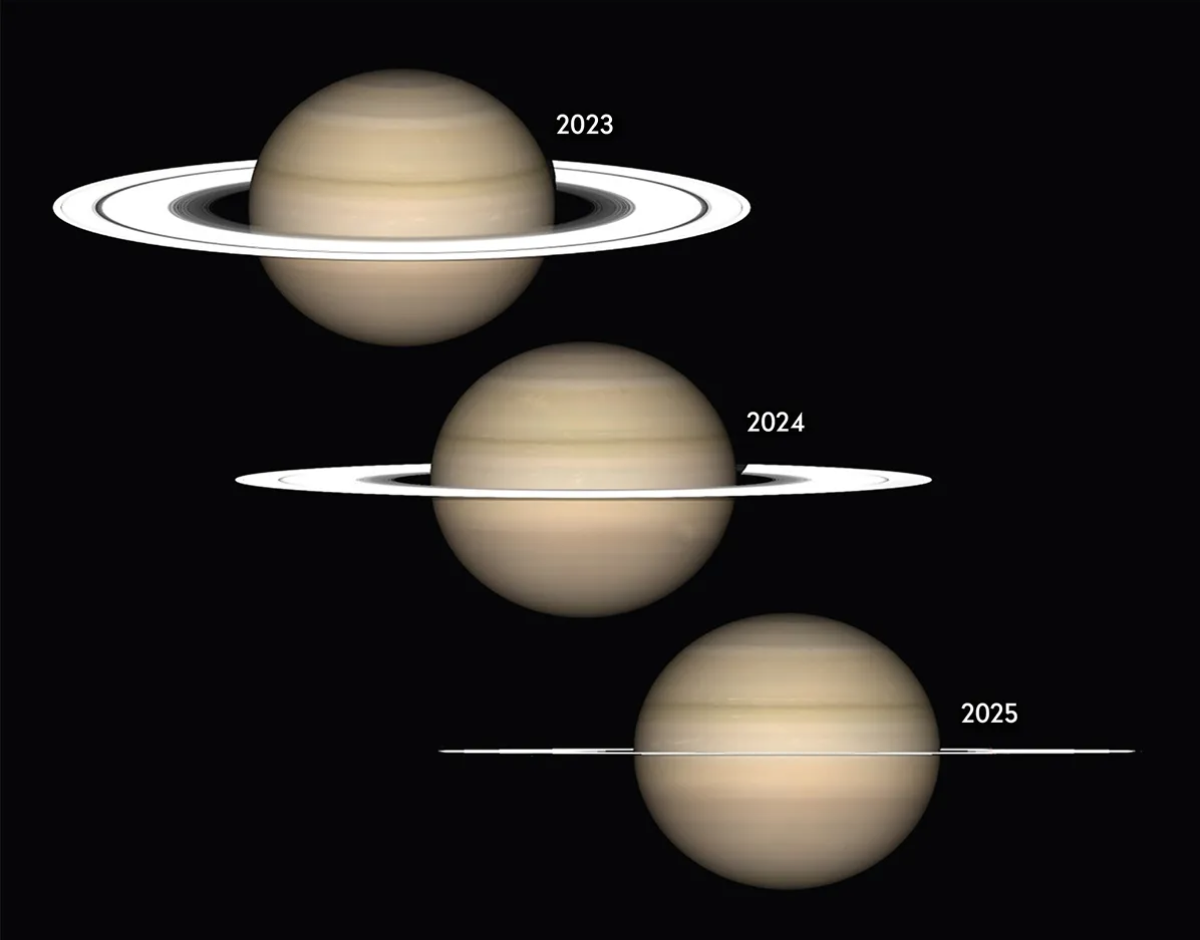[Op-Ed] What About Saturn's Rings?
As an astronomy enthusiast, I've followed studies on Saturn's rings with particular interest for many years.
MORE IN THIS SECTION
As an astronomy enthusiast, I've followed studies on Saturn's rings with particular interest for many years. News of their upcoming "disappearance" in March 2025 has stirred excitement in the amateur astronomical community, although what will actually occur is a fascinating optical phenomenon.
During this event, Earth will align exactly with the edge of the rings, making them virtually invisible from our perspective. This phenomenon, occurring every 13-16 years and lasting 1 to 2 years, offers us a unique opportunity to reflect on the true nature of these structures.

Credit: NASA-JPL
Saturn's rings are far more complex than they appear. They extend for 170,000 miles, nearly the distance between Earth and the Moon, yet their thickness is surprisingly small: less than a kilometer in most areas, and in some points barely 10 meters.
The seven main rings (D, C, B, A, F, G, and E, named in order of discovery) are composed primarily of ice and rock fragments. Their size varies enormously: from microscopic smoke-like particles in rings D and E, to house-sized blocks in rings A, B, and C.

RELATED CONTENT
Credit: Forbes Digital
A lesser-known aspect is the crucial role of "shepherd moons," small moons whose gravity keeps ring particles in their orbits. However, this system isn't perfect: smaller particles constantly fall towards Saturn, being replaced by new ones from collisions between larger fragments. Recent research suggests these majestic rings could completely disappear in the next 300 million years, or even sooner, according to NASA observations in 2018. Saturn's magnetic field is causing a "ring rain," where icy particles gradually fall towards the planet.
The upcoming temporary disappearance of the rings in 2025 will be followed by a privileged view in 2032, when they will align perfectly for our observation.
For astronomy enthusiasts, these visibility cycles remind us that the cosmos is dynamic and ever-changing. Each new discovery enriches our understanding of these celestial phenomena which, though distant, continue to captivate our imagination and fuel our scientific curiosity.





LEAVE A COMMENT: